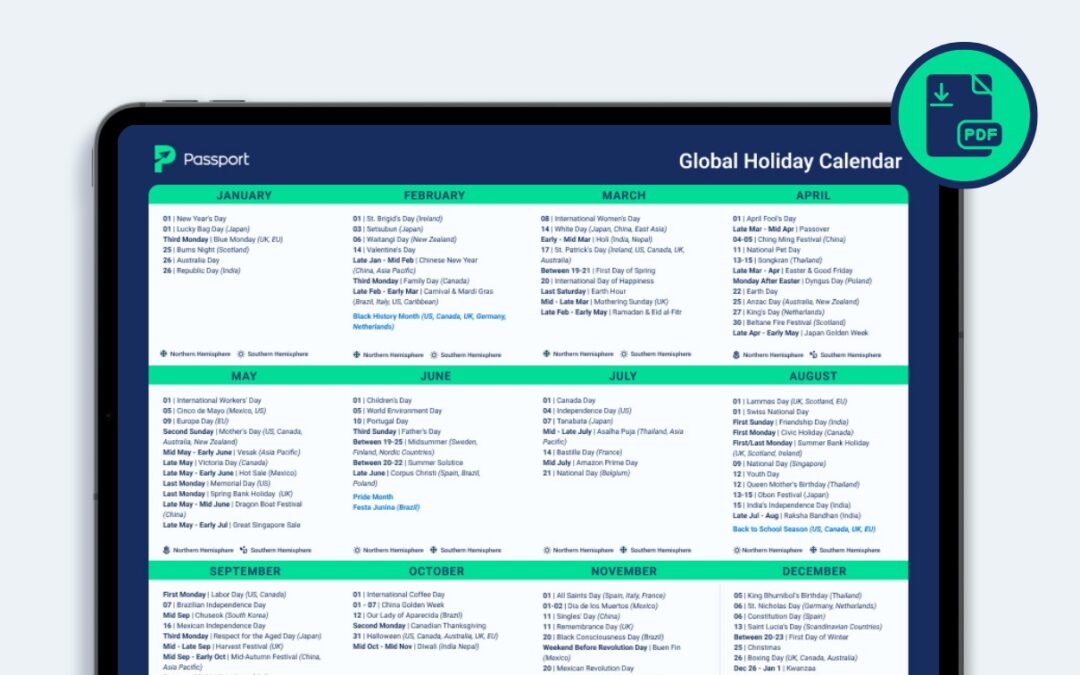The global e-commerce market continues to grow at an impressive pace, with worldwide sales expected to reach $6.3 trillion by the end of 2023. This represents a significant increase from 2022, when sales reached $4.28 trillion. That’s a lot of opportunity for e-commerce brands to capture new market share.
It’s such a big opportunity, however, that careful execution becomes more important than ever. No one wants to watch their product lines wash away in a sea of competition.
In order to optimally expand your own brand internationally, a deeper understanding of international selling and fulfillment will be necessary.
Here are five steps to take to help you get started with a strategic expansion into new global markets.
1. Understand the Impact on Current Operations
Before embarking on any efforts at international expansion, examine your existing e-commerce platform, logistics network, fulfillment processes, vendor partners, and shipping agreements for readiness.
Expanding internationally may require operational expansions, process improvements, and the introduction of new technologies and partners. By assessing your current operations and considering the necessary changes for international growth, you can begin to map out a successful expansion strategy.
This doesn’t have to be an overwhelming task. And many brands may not have to do much more than test their new markets at lower-risk price points, and with the right partners, before going all-in.
You can start by testing new markets one at a time, gradually scaling up as you gain confidence and experience. This approach, often adopted by successful direct-to-consumer (DTC) brands, allows for manageable risk and learning at each step. Partnering with experienced vendors like Passport, who have deep knowledge and robust networks when it comes to global shipping, can further mitigate risks and streamline the expansion process.
As a general tip, popular starting points for testing new markets include Canada, the United Kingdom, the European Union, and Australia.
2. Define Demand and the Regulatory Environment
Understanding the demand for your product in new global markets is essential to successful expansion. This may involve conducting comprehensive market research to identify popular trends, consumer behavior, and cultural preferences in different countries – particular of course to your industry and niche.
It’s not just about discovering whether or which of your products are in demand. You’ll also want to know how local consumers shop and their preferred payment methods. You’ll definitely want to get familiar with their expectations in the areas of customer service and delivery.
Additionally, it’s important to understand the regulatory environment in each target market, including:
-
Import laws and customs regulations
-
Tax requirements
-
Industry-specific laws and rules, depending on your unique product catalog
While you can do all the required vetting in these areas by yourself, consider consulting with industry experts and logistics professionals who can provide accurate guidance, more quickly. You might also seek out local expertise to help avoid common but hard-to-anticipate pitfalls, to ensure a smoother entry into any one market.
And, again, outsourcing can be your friend, with experienced partners helping to reduce the risk of making any understandable but potentially costly and avoidable mistakes during your expansion efforts.
3. Consider the Customer’s Expectations & Experience
Customer expectations and experiences can vary greatly across different markets. It’s important to understand any potential differences in these areas and to tailor your approach accordingly.
This might involve updating your product offerings, improving your e-commerce shopping experience for broader segments of customers, and working to balance delivery speed and cost (especially for faraway delivery locations). It can often be prohibitively expensive to match international shipping times to your domestic delivery times. This does not at all have to exclude you from global growth. It just might mean that you need to put some extra thought into policies and communications surrounding international sales.
Finally, ensure your technological infrastructure is up to the task of serving your new target markets. From shopping to delivery, you’ll want an experience that’s as seamless and enjoyable for your new international customers as it is for your domestic customers.
4. Determine the Timing for Your Expansion
You know the old saying: timing is everything when it comes to international expansion 😏
In all seriousness, it’s important to plan ahead when it comes to several considerations specific to global expansion efforts.
These might include:
-
Peak seasons and/or seasonality in each new market (the U.S. winter is Australia’s summer)
-
Carrier capacity in each new market
-
Lessons learned from past expansions
This little bit of homework can help you select the right shipping partners, potentially secure more favorable rates, and avoid potential pitfalls.
Your new target markets will have their own times of ebb and flow, just as in your domestic sales cycles. Make it your business to know country-specific busy times or low-activity periods. These can significantly impact shipping timelines and customer experience. For example, certain countries may celebrate specific holidays or events, unknown to you in your base country, that could affect the delivery speed of your products or even increase demand at certain times.
Such periods may also influence your customer support needs. During spikes of activity, you may need to increase customer support capacity to handle a higher volume of inquiries or issues. Conversely, during low-activity times, you may need to adjust your customer support hours down.
And don’t forget to work time zone differences into your plans.
5. Assess Carriers and Select Partners
When it comes to the fulfillment side of your expansion efforts, choosing the right logistics and/or carrier partners can make or break your execution.
Seek out partners who offer transparency, boast proven industry expertise, and employ a customer-centric approach matchable to your own. You might also consider contracting with a mix of partners, depending on your specific needs and the particular services offered by your preferred vendors. Once you’ve selected your partners, ensure that their technology can be easily integrated with yours, to maintain that transparency and for ease of execution.
Passport does all these things. With our deep understanding of international shipping complexities, we can help you navigate any challenges you might encounter as you go about expanding your e-commerce brand globally.
We offer end-to-end transparency, a customer-first approach, and boast a robust network of carrier partnerships. Our technology integrates seamlessly with your existing systems, ensuring a smooth transition and ongoing operations. And we’ve helped other clients achieve measurable, bottom-line success.
Expanding your e-commerce brand internationally is a big step, but it doesn’t have to be a daunting one. With careful planning, a deep understanding of your target markets, and the right partners, you can successfully extend your reach and tap into new, lucrative markets.
Our team of experts is ready to guide you through these complexities of international shipping and help you reach your global expansion goals. To get started, connect with the Passport team here.




